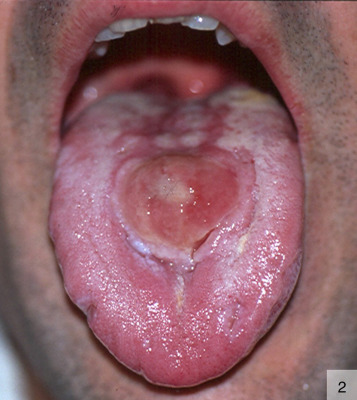Primary genital syphilis represents the first stage of syphilis infection, caused by the spirochete bacterium Treponema pallidum. Characterized by the appearance of a painless genital ulcer known as a chancre, this sexually transmitted infection (STI) marks the onset of a systemic disease that can progress through several distinct clinical stages if left untreated. Early diagnosis and management are critical in preventing the progression and transmission of the disease.

Etiology and Pathogenesis
Causative Agent: Treponema pallidum
Treponema pallidum is a highly invasive motile spirochete transmitted through direct mucocutaneous contact with an infectious lesion. The bacterium rapidly penetrates microabrasions in the epithelium and disseminates through the lymphatics and bloodstream.
Incubation Period
The incubation period ranges from 10 to 90 days, with an average of 21 days before the onset of primary symptoms. During this asymptomatic window, the infection can still be transmitted.
Clinical Manifestations of Primary Syphilis
Syphilitic Chancre Characteristics
- Solitary, painless ulcer
- Firm, indurated edges
- Clean base with minimal exudate
- Typically located on external genitalia, but may also appear on the perianal region or oral cavity depending on exposure site
Regional Lymphadenopathy
- Non-tender, bilateral inguinal lymph node enlargement
- Develops concurrently with or shortly after chancre appearance
- Nodes are rubbery and mobile
Atypical Presentations
- Multiple chancres may develop in co-infection with HIV
- Painful or necrotic lesions may occur, though rarely
Diagnostic Approach to Primary Genital Syphilis
Direct Diagnostic Methods
- Darkfield Microscopy: Gold standard for early diagnosis by visualizing motile spirochetes from chancre exudate
- Direct Fluorescent Antibody (DFA-TP): Detects T. pallidum antigens in lesion samples
- PCR Testing: High sensitivity and specificity; increasingly available in advanced clinical settings
Serologic Testing
Serology becomes reactive 1–2 weeks after chancre appearance:
- Nontreponemal Tests: RPR (Rapid Plasma Reagin) and VDRL
- Used for initial screening and monitoring treatment response
- Treponemal Tests: FTA-ABS and TPPA
- Confirmatory, remain positive for life
Transmission and Risk Factors
Modes of Transmission
- Sexual contact (vaginal, anal, or oral) with infectious lesions
- Vertical transmission during pregnancy (congenital syphilis)
- Rarely via blood transfusion (screened blood makes this extremely unlikely)
High-Risk Populations
- Men who have sex with men (MSM)
- Individuals with multiple sexual partners
- Co-infected individuals with HIV
- Commercial sex workers and their clients
Treatment Protocols for Primary Syphilis
First-Line Treatment
- Benzathine penicillin G, 2.4 million units intramuscularly in a single dose
- Effective in over 95% of early-stage infections
Alternatives for Penicillin-Allergic Patients
- Doxycycline 100 mg orally twice daily for 14 days
- Tetracycline 500 mg orally four times daily for 14 days
- Ceftriaxone 1–2 g IV or IM daily for 10–14 days
Jarisch-Herxheimer Reaction
A common acute febrile reaction occurring within 24 hours of initiating therapy:
- Fever, chills, myalgia, and headache
- Not an allergic reaction to penicillin
- Managed supportively with antipyretics
Public Health Considerations
Partner Notification and Testing
- All sexual partners within the 90 days prior to diagnosis should be evaluated and treated empirically
- Partners beyond this window should undergo serologic testing
Reporting and Surveillance
- Syphilis is a notifiable disease in most countries
- Accurate reporting to local public health authorities is essential for tracking outbreaks
Co-Infection Screening
- Concurrent testing for HIV, gonorrhea, and chlamydia is recommended in all patients diagnosed with syphilis
Prevention and Long-Term Follow-Up
Preventive Strategies
- Consistent condom use
- Routine STI screenings, particularly in high-risk populations
- Sexual health education and counseling
Follow-Up Schedule
- Clinical and serologic follow-up at 6 and 12 months post-treatment
- A fourfold decrease in nontreponemal titers confirms treatment success
- Persistent or rising titers suggest treatment failure or reinfection
Complications if Untreated
Progression to Secondary Syphilis
- Develops in approximately 25% of untreated cases
- Manifests with systemic symptoms, rash, mucous patches, and generalized lymphadenopathy
Latent and Tertiary Syphilis
- Can lead to neurologic, cardiovascular, and gummatous complications
- Prevention relies on early detection and treatment of primary stage
Primary genital syphilis remains a significant global health concern due to its infectivity, asymptomatic latency, and potential for severe long-term consequences. Prompt recognition of the characteristic painless chancre, supported by reliable diagnostic testing, enables early treatment with penicillin and effective interruption of transmission. A structured approach to partner management, surveillance, and follow-up ensures successful containment and control of this STI.